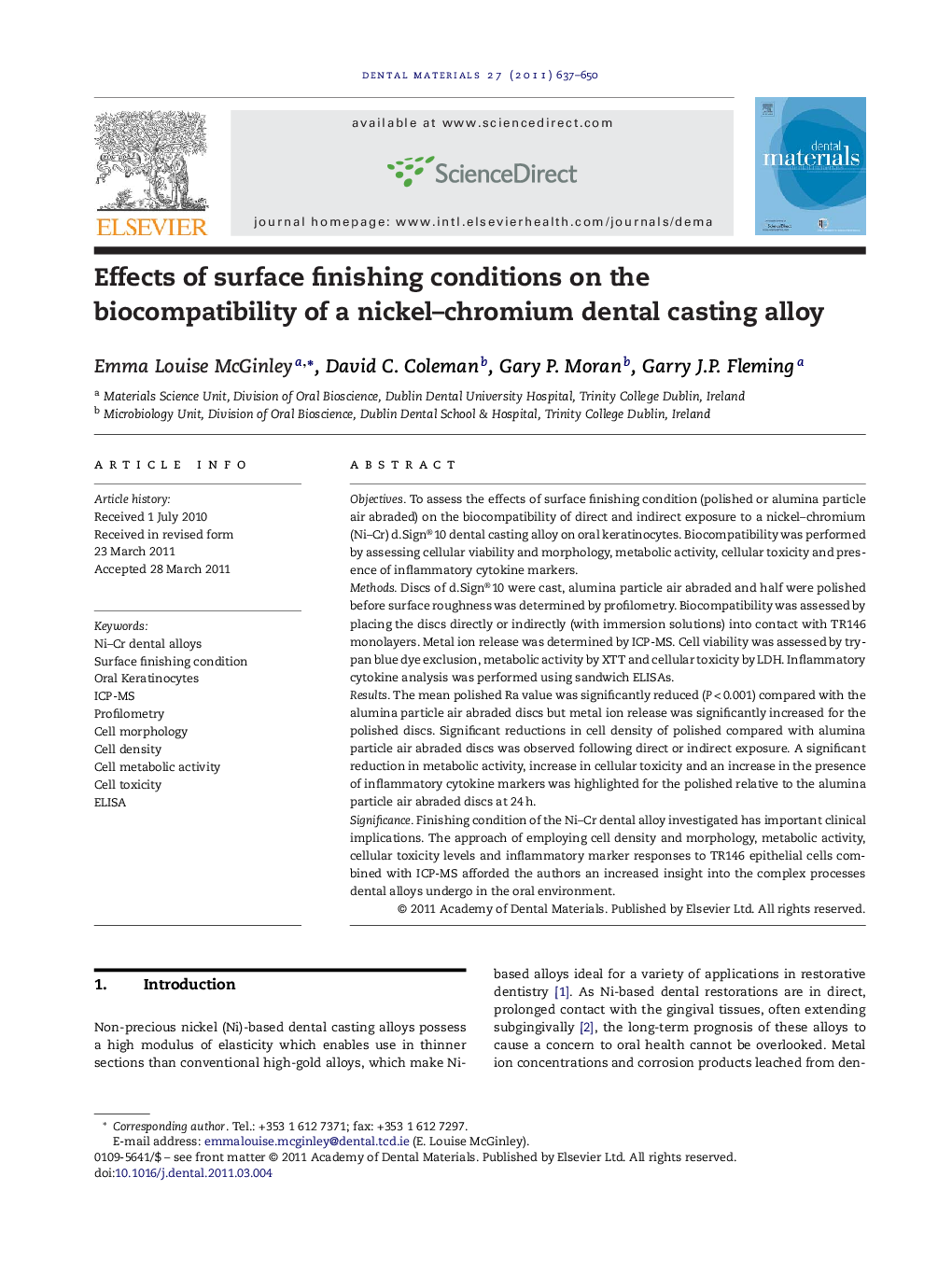| Article ID | Journal | Published Year | Pages | File Type |
|---|---|---|---|---|
| 1421852 | Dental Materials | 2011 | 14 Pages |
ObjectivesTo assess the effects of surface finishing condition (polished or alumina particle air abraded) on the biocompatibility of direct and indirect exposure to a nickel–chromium (Ni–Cr) d.Sign®10 dental casting alloy on oral keratinocytes. Biocompatibility was performed by assessing cellular viability and morphology, metabolic activity, cellular toxicity and presence of inflammatory cytokine markers.MethodsDiscs of d.Sign®10 were cast, alumina particle air abraded and half were polished before surface roughness was determined by profilometry. Biocompatibility was assessed by placing the discs directly or indirectly (with immersion solutions) into contact with TR146 monolayers. Metal ion release was determined by ICP-MS. Cell viability was assessed by trypan blue dye exclusion, metabolic activity by XTT and cellular toxicity by LDH. Inflammatory cytokine analysis was performed using sandwich ELISAs.ResultsThe mean polished Ra value was significantly reduced (P < 0.001) compared with the alumina particle air abraded discs but metal ion release was significantly increased for the polished discs. Significant reductions in cell density of polished compared with alumina particle air abraded discs was observed following direct or indirect exposure. A significant reduction in metabolic activity, increase in cellular toxicity and an increase in the presence of inflammatory cytokine markers was highlighted for the polished relative to the alumina particle air abraded discs at 24 h.SignificanceFinishing condition of the Ni–Cr dental alloy investigated has important clinical implications. The approach of employing cell density and morphology, metabolic activity, cellular toxicity levels and inflammatory marker responses to TR146 epithelial cells combined with ICP-MS afforded the authors an increased insight into the complex processes dental alloys undergo in the oral environment.
